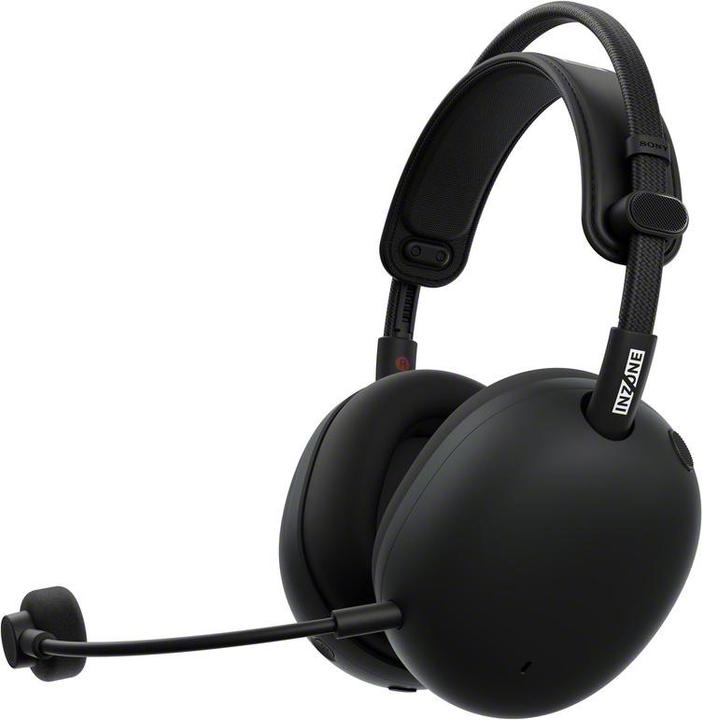

Sony Inzone H9 II: a high-end headset with WH-1000XM6 DNA
Sony’s new Inzone H9 II gaming headset’s not for everyone. This is due to both its relatively high price and its sound profile.
The new Inzone H9 II promises all the features I expect from a high-end gaming headset. Plus, powerful sound – after all, it features the same drivers as Sony’s flagship WH-1000XM6 headphones. The manufacturer’s charging a similarly hefty price tag, likely only worthwhile for a small number of users.
Light and attractive
When I first put the headset on, I notice how light it is. The H9 II weighs just 260 grammes, making it one of the lightest in its class. The headband’s been redesigned for better weight distribution compared to the first version. The thin steel frame’s wrapped in fabric, with an adjustable, padded leatherette cushion underneath, making it comfortable to wear.
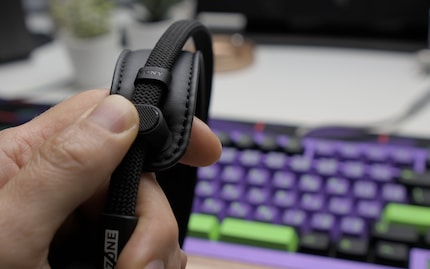
It’s disappointing how finger grease builds up on the plastic coating on the ear cups from the very first time you touch it. It looks grubby. Sony should work on this for any forthcoming third version.
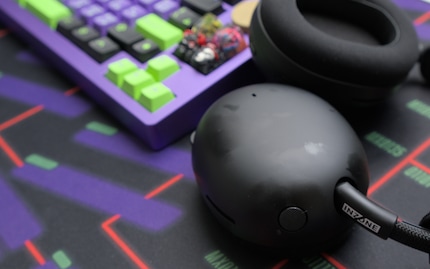
The large, round ear cups boast generous, deep padding, so your ears aren’t squashed against the inner walls. There, the material’s also breathable. The mesh fabric and inner lining make them comfortable for longer gaming sessions. Plus, the ear pads can be replaced if they wear out over time.
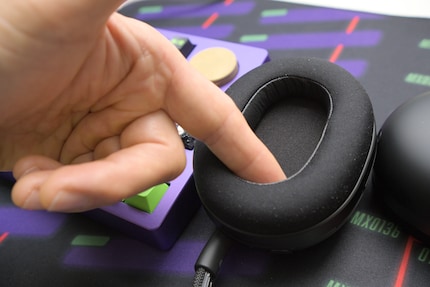
The ear cups can be rotated completely flat in both directions. However, you can’t fold the earpieces. Nevertheless, the headset is portable. Sony includes a soft case with a water-resistant outer shell and velvet lining.
Simple controls
They’re easy to use. The Inzone H9 II has buttons on the back of the ear cups. On the right are buttons for game/chat balance, a power button and a Bluetooth pairing button. On the left is a switch for moving between active noise cancellation (ANC), ambient sound mode and normal mode. There’s also a volume wheel, USB-C charging port and microphone jack. The microphone’s detachable, and there’s a large mute button on top of the left ear cup. It’s all intuitive, and after getting used to it for a little while, it’s easy to reach the right buttons right away.
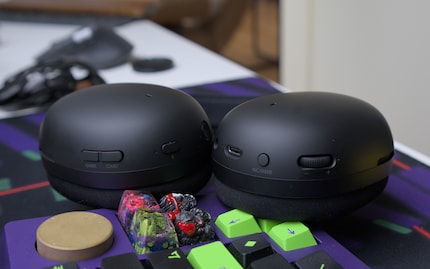
A mixed bag for gaming
Although the Inzone H9 II uses the same 30 mm drivers as the WH-1000XM6 headphones, they sound completely different. Sony worked with pro gamers to develop the gaming headset and specifically mixed it, highlighting sounds that benefit FPS pros.
It works: sound effects such as footsteps are clear, and it’s easy to locate enemies. The tuning also helps reduce auditory fatigue during long gaming sessions with constant gunfire or other loud sound effects. However, the bass still offers enough punch for explosions and weapon noise without being excessively boomy and obscuring important spatial cues.
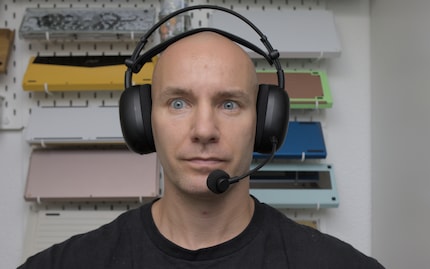
However, when playing single-player games like Digimon Story: Time Stranger or listening to music, I have to use the equaliser. The default tuning’s muffled, instruments lack presence and voices in cutscenes are drowned out by the music.
It’s a shame. I wish Sony would make the WH-1000XM6 tuning options available in the apps. Then nothing would stand in the way of you enjoying music.
Powerful microphone
The H9 II replaces its predecessor’s plastic flip-to-mute microphone with a detachable one. It features a unidirectional design that focuses on voices and reduces background noise. While it doesn’t replace a podcast microphone, it sounds much better than most alternatives. I’m particularly impressed by how well the microphone filters out background noise without significantly affecting the sound. It’s best you hear it for yourself:
Good noise cancelling
The Sony Inzone H9 II joins the growing group of high-end gaming headsets with active noise cancellation and offers great performance. The passive isolation is also good, reducing ambient noise.
I barely hear anything when my children shout and scream in the living room next door. The street in front of the house – a bus route – sounds completely silent even when the window’s open.
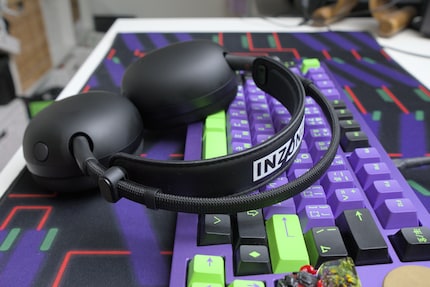
The H9 II doesn’t have a fully fledged transparency mode like the WH-1000XM6. There is, however, an ambient mode that lets in more outside noise. There’s a difference compared to just turning off ANC – the general ambient hum sounds louder. However, this mode isn’t practical for conversations, as they’ll get lost in the ambient noise.
Controls on desktop and mobile
On my desktop, I configure the headset using the Inzone Hub. It offers the essentials: equaliser, noise cancelling and microphone settings. The EQ presets include some FPS-specific ones. You can also have a custom EQ with 10-band sliders.
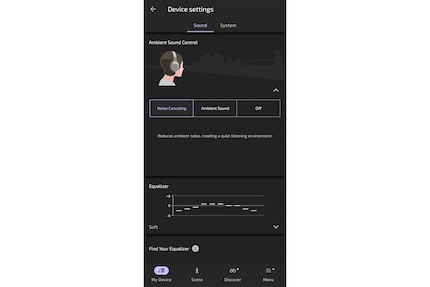
The H9 II is compatible with the Sony Sound Connect app on mobile devices. It has the same features as the Inzone Hub on PC, but the main advantage is that EQ presets can be saved on the headset itself. This allows you to apply the EQ settings to your PlayStation or Switch.
Flexible connection options
You can connect the Sony Inzone H9 II in multiple ways. On PCs or consoles, wireless connection is best via the 2.4 GHz dongle provided. Alternatively, you could use Bluetooth with the standard SBC and AAC codecs. Bluetooth 5.3 offers LE audio for longer battery life and better sound thanks to the LC3 codec. Other features include multi-device and broadcast streaming via Auracast. While there’s no multipoint connectivity, you can connect the headset via Bluetooth and wirelessly at the same time.
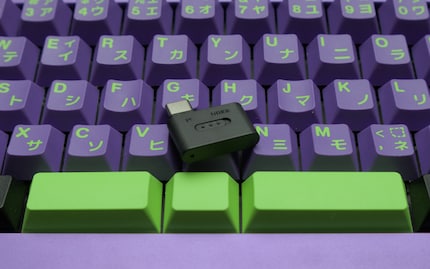
There’s a new wired 3.5 mm connection with the audio cable provided – practical for handheld systems or connecting to the controller.
Solid battery life
Sony claims you’ll get 30 hours of battery life with the Inzone H9 II. In my tests, I achieved around 20 hours with ANC enabled, alternating between wireless and Bluetooth connections. This gives Sony an acceptable runtime, but other headsets offer more. The Razer BlackShark V3 Pro manages up to 30 hours with similar usage.
The H9 II charges via USB-C. A full charge takes 3.5 hours, and a five-minute quick charge promises three hours of audio. You can still use the headset while it’s charging.
In a nutshell
A good headset for the few
If you want a gaming headset with premium features for PC and PlayStation, consider the Sony Inzone H9 II – especially for FPS titles. However, if you’re looking for a headset that sounds good across all genres and with music, it’s not for you. It’s a shame; Sony could just integrate the WH-1000XM6’s sound profile via an equaliser, that would sound great – they use the same drivers, after all.
That said, the ANC performance and microphone are top-notch. The latter sounds really powerful, even with a lot of background noise. The battery life’s decent, and it’s a lightweight, comfortable headset for long sessions. Bluetooth LE connectivity and simultaneous audio output via Bluetooth and wireless are also nice features.
But there are headsets that offer similar features and cost significantly less – such as the Razer Black Shark V3 Pro. So, ultimately, I can’t fully recommend the H9 II.
Pro
- Excellent noise cancelling
- Outstanding microphone
- Comfortable for long gaming sessions
- Replaceable ear pads
Contra
- Relatively high price
- Magically attracts fingerprints
- Suboptimal sound profile for music and story games

From big data to big brother, Cyborgs to Sci-Fi. All aspects of technology and society fascinate me.


